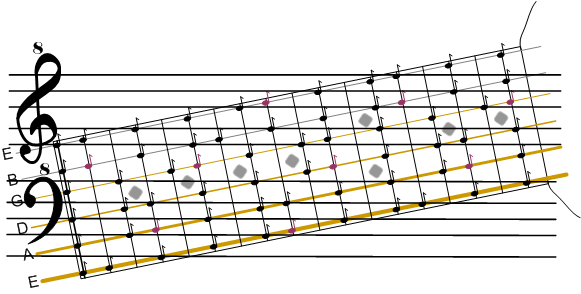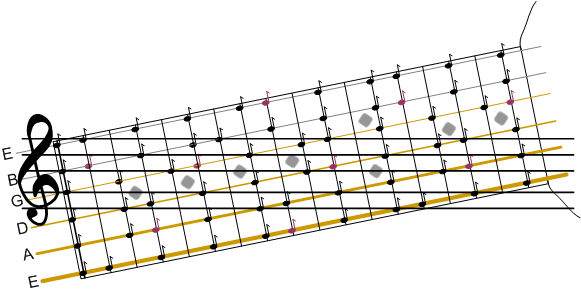I’m trying to learn the guitar in a way that’s compatible with reading standard sheet music. But the notes on the guitar fingerboard seem at first fairly random– because of the different number of steps between successive notes and between strings, it’s tough to predict.
Here’s a standard fingerboard diagram, from wikipedia:

But there’s another way of looking at it, and every note makes sense:


Edits: corrected score octave, added mysteriously-disappearing notes.
Every note is either on a staff line or a staff-middle. This diagram is for a guitar in standard tuning (E-A-D-G-B-E), against a staff in C major. Changes in the tuning move a guitar string up or down; sharps and flats in the staff move its lines up and down.
The guitar strings aren’t evenly spaced, because there are only four half steps between the G and B strings. The staff lines aren’t evenly spaced, because there are different numbers of half steps between them. The one thing that is evenly spaced here is the one thing that’s not on a guitar: the frets. That’s because what’s non-linear in space is linear in what we hear. All music is on a log scale, but so are our ears (like all our senses), so it cancels out.
I’ve called out the C’s in purple for convenience. Also, I show the notes on the frets, instead of between them where you hold the string.
Note: this, along with all my posted material, is Creative Commons.